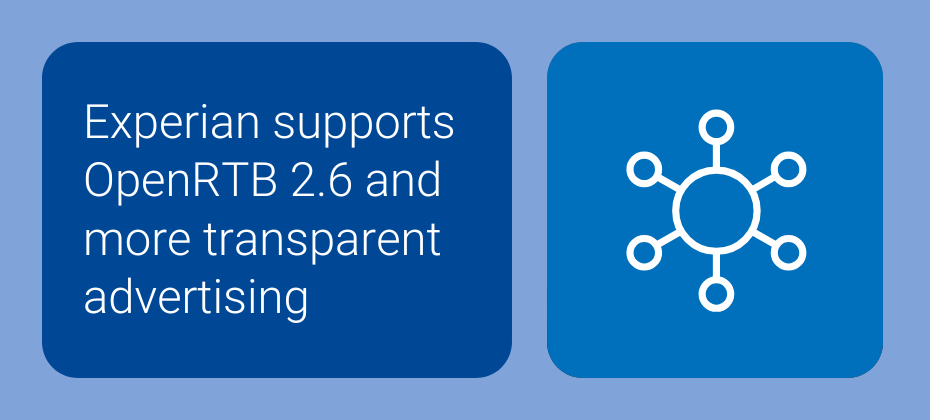
Traditional audience signals are fading, and the industry is facing a new reality: identity is no longer just about connectivity, it’s about outcomes. At Cannes Lions 2025, leaders from AdRoll, LG Ad Solutions, Magnite, MiQ, OpenAP, PubMatic, Stirista, Tatari shared how innovative identity approaches are cutting through the noise, improving performance, and delivering real ROI. Their insights reveal a clear path forward for those ready to turn identity into a performance driver.
Here’s how you can apply the same principles to drive performance.
1. Make identity a performance engine
Treating identity as a performance driver leads to measurable results by creating a clear connection between marketing efforts and outcomes. Identity resolution enables the effective retargeting of audiences, accurate performance attribution across connected TV (CTV), and personalized campaigns across multiple channels. By building household-level graphs and incorporating alternative identifiers, marketers can maintain accuracy as traditional signals change. Activating first-party data across both digital and offline channels ensures that every interaction, whether on-screen or in-store, can be tied back to specific actions, helping optimize campaigns, and improve ROI.
How Experian helps
Experian’s Consumer Sync solutions create a clean foundation and persistent identity spine by resolving and expanding your first-party data across digital and offline IDs (hashed emails, mobile ad IDs, CTV IDs). This enables activation across omnichannel campaigns, from CTV to social, and connects data to outcomes.
“Identity resolution is very important to our overall strategy today. Without that identity linkage, we couldn’t speak the same language as our clients. For example, a client might want to target people who engaged with their brand’s website four days ago via CRM data. Without identity resolution, that’s not possible. But with it, we’re changing the narrative – making TV a hospitable place for deploying first-party data and driving outcomes.”
LG Ad SolutionsMike Brooks
2. Build trust through responsible data practices
Consumer trust begins with responsible data practices that prioritize transparency and privacy. Deterministic match rates ensure accuracy by connecting data points with confidence, while clear methodologies provide visibility into how data is used. These practices improve overall campaign performance and protect consumer privacy by ensuring that every interaction is respectful.
How Experian helps
Experian’s privacy-first approach ensures that all data activation occurs with compliance and consent. By maintaining high match rates and adhering to transparent methodologies, Experian helps build trust and strengthen long-term connections with audiences.
“If people don’t take any precautions and they don’t actually care about data in the public, they probably don’t care about it in private. Experian cares about data privacy and compliance, and that made it a no-brainer for us to work with them. When we combined our focus on privacy with Experian’s expertise, we knew we had to do it right – and we did.”
StiristaHenry Olawoye
3. Expand reach while maintaining high match rates
Having more data points to identify individuals leads to higher match rates and broader reach. Enriching records with additional identifiers, like hashed emails, MAIDs, and CTV IDs, makes it easier to connect data across channels and create a unified view of each person. This approach ensures that campaigns can scale effectively while maintaining the accuracy needed to deliver personalized experiences.
How Experian helps
With a database of over 5,000 attributes spanning 15 verticals and categories, Experian provides a comprehensive view of consumers through a single provider. By sourcing data from over 200 sources (including public records, consumer surveys, and purchase records), Experian enables the creation of detailed audience profiles. This enriched data focuses on identity, creating a unified view of individuals that helps pinpoint the best opportunities to engage effectively across channels and deliver measurable outcomes tailored to specific audience needs.
“We’ve been able to extend our IDs by an average of 6.5 different identifiers, with a 70% match rate. That extension is huge – it underpins a lot of the connectivity in our platform and allows us to bring 300 data feeds together to make the most of them.”
MiQGeorgiana Haig
4. Create unified campaigns with interoperability
Fragmented data often leads to fragmented results. Interoperability ensures that data from different platforms and systems can work together, creating a unified view that makes measurement and attribution more actionable.
How Experian helps
Experian simplifies interoperability by ensuring consistent data usage from activation and measurement. By connecting data from various sources, Experian enables a cohesive strategy where insights can be shared across publishers, measurement providers, and ad servers, ensuring campaigns remain aligned and effective at every stage.
“The ecosystem benefits from optimized interoperability. We’re focused on allowing advertisers to work seamlessly across IDs and identity solutions – from activation to resolution – so the same data set is used consistently across publishers, measurement providers, currencies, programmatic ecosystems, and ad servers.”
OpenAPChris LoRusso
5. Use AI to amplify, not replace, strategy
Artificial intelligence (AI) is transforming how campaigns are optimized, but its success depends on clean, consented identity foundations. AI can analyze vast amounts of data to refine targeting, manage frequency, and uncover new efficiencies, but only when built on a strong identity framework.
How Experian helps
Experian uses AI and machine learning to deliver highly personalized marketing solutions. Advanced clustering algorithms in Experian’s Digital Graph analyze and create household and individual device connections, improving targeting and measurement accuracy, while machine learning models improve consumer insights by inferring household composition where data is limited. These innovations enable AI tools to quickly generate tailored audience solutions, analyze contextual signals in real time, and identify opportunities that improve results while maintaining a human centered approach to decision making.
“AI is a copilot to your marketing initiatives. For it to perform, it needs insights and information to learn from. That’s why having a strong foundational data asset rooted in deterministic data is so important.”
PubMaticHoward Luks
Five moves to turn identity into profit
Here are five steps to get started:
The common thread across these insights is connection: connecting data, teams, and outcomes. Marketers who act on these imperatives will be ready for whatever new channel, format, or privacy rule comes next.
Let’s start a conversation about how Experian can help you turn identity into ROI
Latest posts

2024 marked a significant year. AI became integral to our workflows, commerce and retail media networks soared, and Google did not deprecate cookies. Amidst these changes, ID bridging emerged as a hot topic, raising questions around identity reliability and transparency, which necessitated industry-wide standards. We believe the latest IAB OpenRTB specifications, produced in conjunction with supply and demand-side partners, set up the advertising industry for more transparent and effective practices. So, what exactly is ID bridging? As signals, like third-party cookies, fade, ID bridging emerged as a way for the supply-side to offer addressability to the demand-side. ID bridging is the supply-side practice of connecting the dots between available signals, that were generated in a way that is not the expected default behavior, to understand a user’s identity and communicate it to prospective buyers. It enables the supply-side to extend user identification beyond the scope of one browser or device. Imagine you visit a popular sports website on your laptop using Chrome. Later, you use the same device to visit the same sports website, but this time, on Safari. By using identity resolution tools, a supply-side partner can infer that both visits are likely from the same user and communicate with them as such. ID bridging is not inherently a bad thing. However, the practice has sparked debate, as buyers want full transparency into the use of a deterministic identifier versus an inferred one. This complicates measurement and frequency capping for the demand-side. Before OpenRTB 2.6, ID bridging led to misattribution as the demand-side could not attribute ad exposures, which had been served to a bridged ID, to a conversion, which had an ID different from the ad exposure. OpenRTB 2.6 sets us up for a more transparent future In 2010, the IAB, along with supply and demand-side partners, formed a consortium known as the Real-Time Bidding Project for companies interested in an open protocol for the automated trading of digital media. The OpenRTB specifications they produced became that protocol, adapting with the evolution of the industry. The latest evolution, OpenRTB 2.6, sets out standards that strive to ensure transparency in real-time bidding, mandating how the supply-side should use certain fields to more transparently provide data when inferring users’ identities. What's new in OpenRTB 2.6? Here are the technical specifications for the industry to be more transparent when inferring users’ identities: Primary ID field: This existing field now can only contain the “buyeruid,” an identifier mutually recognized and agreed upon by both buyer and seller for a given environment. For web environments, the default is a cookie ID, while for app activity, it is a mobile advertising ID (MAID), passed directly from an application downloaded on a device. This approach ensures demand-side partners understand the ID’s source. Enhanced identifier (EID) field: The EID field, designated for alternative IDs, now accommodates all other IDs. The EID field now has additional parameters that provide buyers transparency into how the ID was created and sourced, which you can see in the visual below: Using the above framework, a publisher who wants to send a cross-environment identifier that likely belongs to the same user would declare the ID as “mm=5,” while listing the potential third-party identity resolution partner under the “matcher” field, which the visual below depicts. This additional metadata gives the demand-side the insights they need to evaluate the reliability of each ID. "These updates to OpenRTB add essential clarity about where user and device IDs come from, helping buyers see exactly how an ID was created and who put it into the bidstream. It’s a big step toward greater transparency and trust in the ecosystem. We’re excited to see companies already adopting these updates and can’t wait to see the industry fully embrace them by 2025."Hillary Slattery, Sr. Director, Programmatic, Product Management, IAB Tech Lab Experian will continue supporting transparency As authenticated signals decrease due to cookie deprecation and other consumer privacy measures, we will continue to see a rise in inferred identifiers. Experian’s industry-leading Digital Graph has long supported both authenticated and inferred identifiers, providing the ecosystem with connections that are accurate, scalable, and addressable. Experian will continue to support the industry with its identity resolution products and is supportive of the IAB’s efforts to bring transparency to the industry around the usage of identity signals. Supply and demand-side benefits of adopting the new parameters in OpenRTB 2.6 Partner collaboration: Clarity between what can be in the Primary ID field versus the EID field provides clear standards and transparency between buyers and sellers. Identity resolution: The supply side has an industry-approved way to bring in inferred IDs while the demand side can evaluate these IDs, expanding addressability. Reducing risk: With accurate metadata available in the EID field, demand-side partners can evaluate who is doing the match and make informed decisions on whether they want to act on that ID. Next steps for the supply and demand-sides to consider For supply-side and demand-side partners looking to utilize OpenRTB 2.6 to its full potential, here are some recommended steps: For the supply-side: Follow IAB Specs and provide feedback: Ensure you understand and are following transparent practices. Ask questions on how to correctly implement the specifications. Vet identity partners: Choose partners who deliver the most trusted and accurate identifiers in the market. Be proactive: Have conversations with your partners to discuss how you plan to follow the latest specs, which identity partners you work with, and explain how you plan to provide additional signals to help buyers make better decisions. We are beginning to see SSPs adopt this new protocol, including Sonobi and Yieldmo. “The OpenRTB 2.6 specifications are a critical step forward in ensuring transparency and trust in programmatic advertising. By aligning with these standards, we empower our partners with the tools needed to navigate a cookieless future and drive measurable results.” Michael Connolly, CEO, Sonobi These additions to the OpenRTB protocol further imbue bidding transactions with transparency which will foster greater trust between partners. Moreover, the data now available is not only actionable, but auditable should a problem arise. Buyers can choose, or not, to trust an identifier based on the inserter, the provider and the method used to derive the ID. While debates within the IAB Tech Lab were spirited at times, they ultimately drove a collaborative process that shaped a solution designed to work effectively across the ecosystem.”Mark McEachran, SVP of Product Management, Yieldmo For the demand side: Evaluation: Use the EID metadata to assess all the IDs in the EID field, looking closely at the identity vendors’ reliability. Select partners who meet high standards of data clarity and accuracy. Collaboration: Establish open communication with supply-side partners and tech partners to ensure they follow the best practices in line with OpenRTB 2.6 guidelines and that there’s a shared understanding of the mutually agreed upon identifiers. Provide feedback: As OpenRTB 2.6 adoption grows, consistent feedback from demand-side partners will help the IAB refine these standards. Moving forward with reliable data and data transparency As the AdTech industry moves toward a cookieless reality, OpenRTB 2.6 signifies a substantial step toward a sustainable, transparent programmatic ecosystem. With proactive adoption by supply- and demand-side partners, the future of programmatic advertising will be driven by trust and transparency. Experian, our partners, and our clients know the benefits of our Digital Graph and its support of both authenticated and inferred signals. We believe that if the supply-side abides by the OpenRTB 2.6 specifications and the demand-side uses and analyzes this data, the programmatic exchange will operate more fairly and deliver more reach. Contact us Latest posts

Note: This Ask the Expert was recorded prior to Experian’s acquisition of Audigent and discusses industry trends and how we’ve worked together in the past. Adopting new strategies based on trust due to evolving privacy regulations and the gradual loss of traditional signals, like third-party cookies, is essential to successfully navigating the future of digital advertising. Advertisers and marketers are at a crossroads, facing the challenge of maintaining personalization and precision while respecting consumer expectations around privacy. To stay competitive, brands must adopt future-ready strategies that focus on trust, privacy-forward technologies, and scalable solutions. In our latest Ask the Expert segment, recorded before Experian acquired Audigent, we explore how first-party data and advanced contextual audience targeting are two critical approaches for successfully navigating these changes. With insights from Greg Williams, President of Audigent, now part of Experian, and Crystal Jacques, VP of Sales at Experian, we discuss how these tools can empower your brand for long-term success. First-party data as a cornerstone strategy First-party data, a powerful tool for building meaningful connections with your audience, has emerged as a fundamental pillar of future-ready strategies. When collected and used effectively, it provides brands with a detailed understanding of consumer preferences and behaviors, enabling real-time campaign adjustments for maximum impact. “Data has become part of every step of the digital advertising supply chain, and should be part of everybody’s buys… the more you can include data in your digital marketing, the better off and the more power you have."Greg Williams, President, Audigent With the continual loss of signal, including third-party cookies, first-party data has proven to be key for brands to stay both competitive and privacy-compliant. Brands using first-party data are better positioned to overcome the challenges of signal loss. This data facilitates improved media targeting and personalized messaging, driving greater engagement and return on investment. Contextually-Indexed Audiences build relevance Experian’s Contextually-Indexed Audiences enable advertisers to target users based on their interests in real-time, without relying on cookies or mobile ad IDs. Machine learning analyzes and maps traffic from over two million websites, linking to Experian’s 2,400 audience segments. With added benefits like audience customization and flexible activation through Audigent’s private marketplaces (PMPs) or demand-side platforms, Experian is setting a new standard for scalable audience targeting. For automotive advertisers, this could mean reaching consumers actively researching luxury electric vehicles on relevant sites. Unlike outdated methods, contextual targeting aligns the message with consumer intent, balancing high precision with consumer privacy. Automotive success story Audigent’s innovative solutions have delivered tangible results. Williams mentions how they helped an automotive brand achieve double the scale and triple their goal of driving test drives. This stands as a testament to the real-world effectiveness of contextual audience strategies and Experian's role in executing them. How to stay ahead of change Here are five strategies to help your brand remain future-ready amid privacy challenges and signal loss: Prioritize first-party data: Build trust and improve targeting accuracy by relying on data that you own directly from your consumers. Test privacy-forward tools: Experiment with solutions like contextual targeting and Google’s Privacy Sandbox to future-proof your advertising. Strengthen identity framework: Create systems to securely manage and use data for cross-channel decision making. Use scalable tools: Partner with trusted providers to deploy solutions that adapt to changing industry standards. Stay proactive and flexible: Continuously evaluate trends and refine approaches to align with emerging consumer and regulatory expectations. A deeper conversation For additional insights, watch our full Q&A. Greg Williams and Crystal Jacques discuss the future of audience targeting, how first-party data reshapes marketing strategies, and how Experian and Audigent have collaborated in the past. Watch now Contact us About our experts Greg Williams, President, Audigent Greg Williams is Audigent's President, responsible for managing Audigent’s vast portfolio of ecosystem partners, enterprise sales, marketing, and client success. An innovator in programmatic ad buying, Williams co-founded MediaMath and was instrumental in building and scaling that company in the US and internationally. He led MediaMath's international expansion in 2011 and grew that business from zero to a top revenue driver for the company in three years. During his 14 years at the company, Williams held global roles and built teams across every function of the organization — most notably leading business and market development, product development, and partnerships. Prior to co-founding MediaMath, Williams held senior positions at [X+1] (which was later acquired by RocketFuel), Nielsen, and Accenture. Crystal Jacques, Head of Enterprise Sales, Experian Head of Enterprise Partnerships, leading Experian's go-to-market team across all verticals. With over ten years of experience in the Identity space, Crystal brings a wealth of expertise to her role. She joined Experian in 2020 through the Tapad acquisition, following her successful stint as the head of Global Channel Partnerships for Adbrain, which The Trade Desk later acquired. Latest posts

CES 2025 will be an exciting opportunity to explore how we can work together to shape the year ahead. Here are four themes we expect to take center stage at the event. “There is no better way to kick off the calendar year than with clients and industry peers that are excited to collaborate on new business opportunities. People come straight off the holidays energized by CES and with a pipeline of deals to work on for the coming month. In-person meetings always trump virtual calls and everyone in the industry comes together to make it a fruitful week.”Crystal Jacques, Head of Enterprise Partnerships 1. Addressability in a signal-loss world Addressability has become a cornerstone in AdTech as brands aim to deliver personalized experiences while navigating evolving privacy regulations and signal loss. This shift has prompted advertisers to rethink how they reach and engage audiences. In this environment, alternative identifiers such as UID2 and ID5 have gained traction, offering brands new avenues to target consumers across platforms while respecting privacy. Addressability has shifted from a straightforward tracking mechanism to a multifaceted strategy that combines identity solutions, contextual insights, and collaboration across the ecosystem. ID Bridging and the new OpenRTB 2.6 specs As the industry loses identity signals, it becomes increasingly difficult to identify audiences on the supply-side and make them reachable for the demand-side. The supply-side has used the practice of ID bridging to do just that. ID bridging is the supply-side practice of connecting the dots between available signals to infer a user’s identity and communicate it to prospective buyers. This practice sparked debate, as buyers want full transparency into the use of a deterministic identifier versus an inferred one. "The OpenRTB 2.6 specifications are a critical step forward in ensuring transparency and trust in programmatic advertising. By aligning with these standards, we empower our partners with the tools needed to navigate a cookieless future and drive measurable results.”Michael Connolly, CEO, Sonobi The industry needs widely accepted standards, and that's what we believe the industry has with the IAB Tech Lab's OpenRTB 2.6. The specifications dictate the data the supply-side needs to include in the Primary ID and Enhanced Identifier (EID) fields. In doing so, the demand-side receives more transparent information on when bids have inferred IDs and where they came from. As authenticated signals decrease due to cookie deprecation and other consumer privacy measures, we will continue to see a rise in inferred identifiers. Experian’s industry-leading Digital Graph has long supported both authenticated and inferred identifiers, providing the ecosystem with connections that are accurate, scalable, and addressable. Experian will continue to support the industry with its identity resolution products and is very supportive of IAB’s efforts to bring transparency to the industry around the usage of identity signals. 2. Commerce media consolidation As the world of commerce media expands beyond traditional retail media, we’re seeing a surge of networks across various verticals—financial, travel, and beyond—all competing to capture shoppers’ attention. With each company independently building its own media network, the need for strategic partnerships has never been more evident. Key players face challenges in scaling these networks and meeting growth targets due to infrastructure and funding limitations. In response, the industry is shifting toward partnerships – and potentially consolidation – to create networks that allow advertisers to reach customers across the entire shopping journey – from digital to in-store. To succeed, commerce media networks must form strategic partnerships to enhance their data and identity capabilities and provide advertisers with a complete view of their customer. “With annual growth in billions of dollars, the revenue potential for RMNs is massive. Organizing customer data, segmenting customers, generating insights, creating addressable audiences, and activating campaigns are all critical steps for a RMN to realize that revenue potential. RMNs should select a partner that provides the data, identity and analytical resources to create the winning formula for marketers, customers and retailers.”Steve Zimmerman, Director of Analytics With Experian’s expertise in data and identity solutions, commerce media networks can overcome data fragmentation, create high-quality audiences, and maximize addressability across their entire customer base. This collaborative, partner-led approach empowers retailers to utilize their first-party customer data but not be limited by in-house resources. As the commerce media space matures, those who embrace these partnerships and data-driven solutions will be well-positioned to capture the full potential of this expanding market. 3. Navigating complex privacy regulations With privacy concerns intensifying, consumers are more conscious about data usage, and a series of state-level privacy laws are poised to take effect across the U.S. Multiple state-level laws makes compliance more challenging for marketers since no two laws are the same. While a federal privacy law remains unlikely for 2025, discussions around data ethics, compliance, and transparency will be prominent at CES, especially as a new administration assumes office. Our privacy-forward audience solutions Our Geo-Indexed and Contextually-Indexed Audiences help marketers reach the right consumers while prioritizing data privacy. Created without sensitive personal information, these audiences utilize geographic and contextual signals – not personal identifiers — to offer relevant targeting. These new tools provide both privacy and accuracy, giving advertisers and publishers a competitive edge. “By embracing innovations in geo-based targeting and adhering to responsible data strategies, you can not only comply with these laws but continue to reach your intended audiences effectively.”Jeremy Meade, VP, Marketing Data & Operations As privacy regulations evolve, marketers need trusted allies who can provide transparent, compliant solutions. With deep roots in data protection and security, you can confidently partner with Experian as we proactively stay ahead of regulations and strictly follow all consumer privacy laws. 4. Rise of curation As privacy regulations and signal loss reshape the AdTech ecosystem, curation can optimize programmatic campaigns by connecting advertisers with valuable audiences. This emerging trend utilizes audience, contextual, and supply chain signals to curate high-quality inventory packages for advertisers. By blending insights with inventory, curation ensures greater addressability, efficiency, and performance for both advertisers and publishers. Supply-side platforms (SSPs) are taking a more active role in curating audiences and inventory. SSPs now collaborate with data providers to match buyer and publisher first-party data in real-time, creating curated private marketplaces (PMPs) that deliver transparency, efficiency, and improved match rates. SSPs can send deal IDs to multiple DSPs, which allows advertisers to deploy audience-based campaigns without restrictions on which DSPs or identifiers can be used. However, curation isn’t without challenges. It can add complexity, lead to redundant buys, and even reduce publisher control over inventory. Transparency, quality benchmarks, and strategic partnerships will be critical for maximizing the benefits of curation in 2025. Experian, in partnership with Audigent and others, is at the forefront of enabling privacy-forward curation strategies. Experian and Audigent’s combined capabilities bring together first-party publisher data, contextual signals, and advanced identity resolution to create curated PMPs that empower marketers to deliver precise, impactful campaigns. Follow us on LinkedIn or sign up for our email newsletter for more informative content on the latest industry insights and data-driven marketing. What were the top themes at CES 2025? Read our CES recap to find out. Read now Contact us Latest posts




